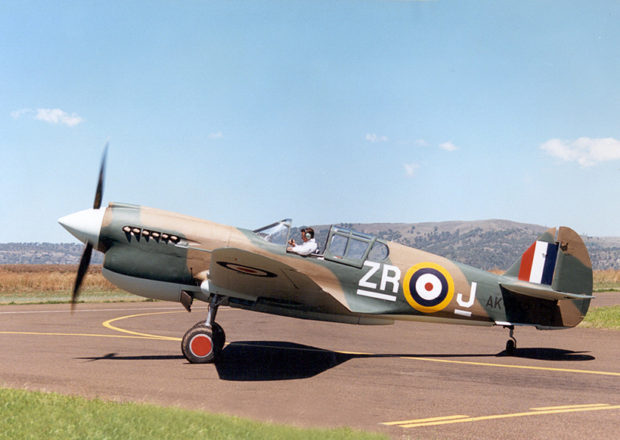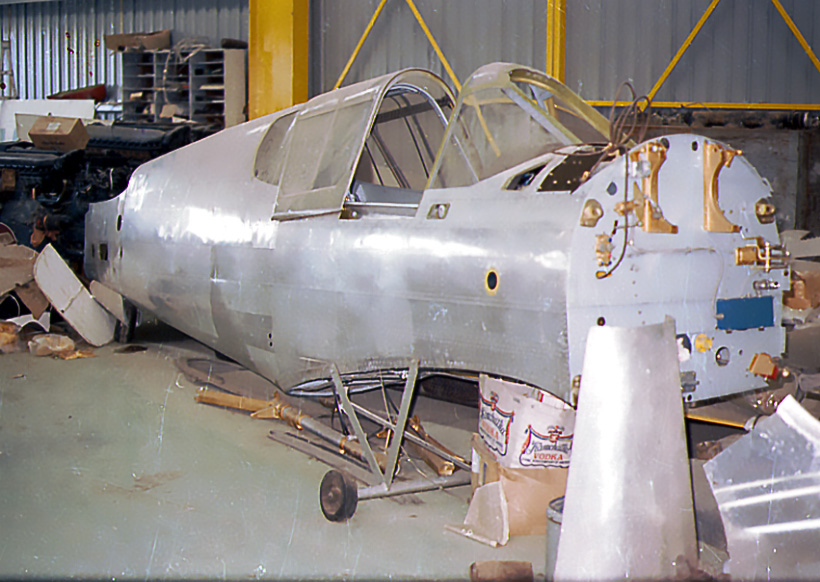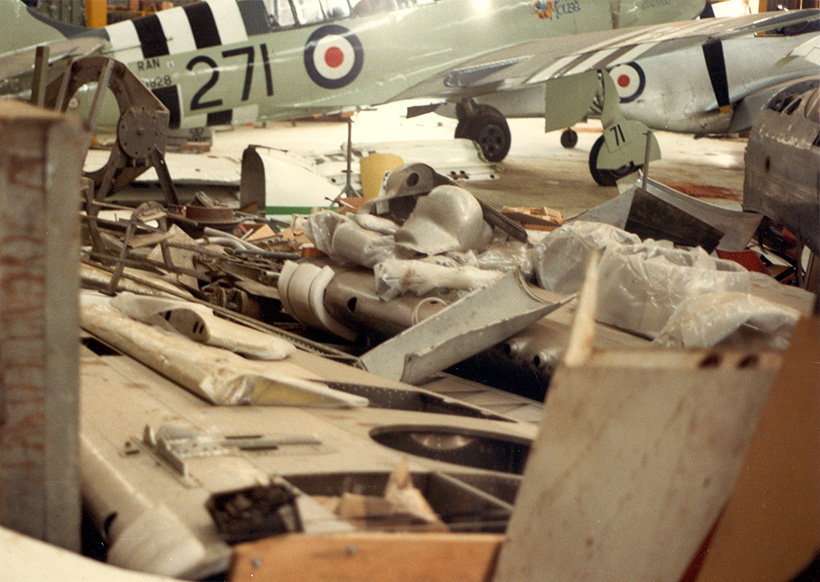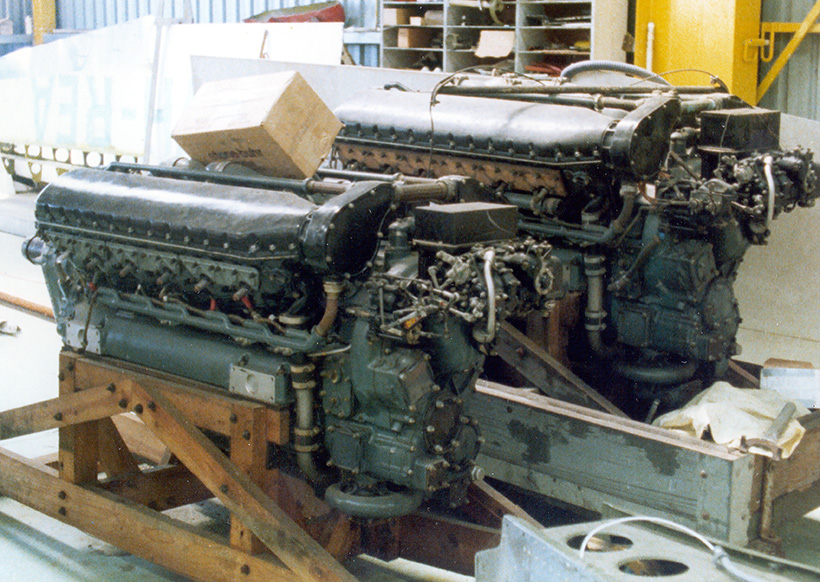CURTISS P40E KITTYHAWK VH-KTH
Curtiss P-40E Kittyhawk VH-KTH
Col Pay was a visionary in the Australian Warbird movement long before Warbirds were common place in Australia, with a string of firsts including Mustang VH-AUB and Spitfire VH-HET. Another of his firsts was the first Curtiss P-40 Warbird in Australia.

RESTORATION
It was natural then for Col Pay to want to add a P-40 to his growing fleet of Warbirds at Scone NSW and his search took him far and wide for a suitable project to acquire. In the end his choice was a little unusual and off the beaten track.
A Canadian P-40E Hawk 87A-3 c/n 15133 AK752 had been buried on a farm in Lethbridge, Alberta, Canada in 1952 and then uncovered again in 1975. The P-40 was 80% complete and had very little corrosion evident. The P-40 was acquired by veteran USA P-40 restoration expert John Paul and then in 1976 it passed on toSteve Seghetti of Vacaville, CA, USA who commenced a lengthy restoration of the aircraft, however after considerable work on the aircraft being completed Col Pay purchased the aircraft in 1985 and spent the next 4 years completing the restoration.
Col already had a collection of P-40 components which assisted in the restoration, however there was a lot of work required to complete the aircraft and its systems. Although much of the work done in the USA was satisfactory it still had to be checked over and verified. Eventually the wings, empennage and fuselage were complete and the Allison V-1710-39 liquid-cooled V12 engine was fitted and the aircraft painted.
The color scheme chosen for the P-40 was also unusual. Instead of going for a P-40E RAAF scheme Col opted for the original scheme the aircraft had worn in Canada with the RCAF in the Western Air Command in the period 1942 to 1945 with 132 Sqn coded as “ZR-J”. The aircraft had also worn the 133 Sqn markings “FN-H” during its service.
Finally on 15 December 1989, the aircraft was completed and made its first flight in 45 years in the hands of Col Pay. This was the first P-40 Kittyhawk to fly in Australia since WWII and was registered as VH-KTH.
Over the next few years the aircraft participated at quite a few displays and air shows including several memorable RAAF Fighter Squadron reunions at RAAF base Williamtown and was always flown with much energy by Col with many a veteran RAAF pilot having a tear in their eyes.
The P-40 was involved in a couple of incidents during this time, sustaining some damage which was repaired and the aircraft flown again. However in 1994 the decision was made to sell the aircraft to James E. Smith of Fortine, MT, USA where it remains to this day at his Stonehenge Air Museum. The P-40 was repainted in the USA as USAAC/AVG Flying Tigers tail number “15133” complete with shark’s mouth.
HISTORY
The P-40 was arguably the most significant fighter in RAAF service during WWII, serving in greater numbers and for more time than any other fighter aircraft. There are many reasons for this, the P-40 wasn’t as desirable as other types to the USA and the UK and there were thus more available for Australia at a time when we needed fighters of any type to defend the country. Certainly early in WWII the UK could not spare any of their aircraft to send to Australia so it was natural to look to the USA for aircraft. The P-40 was already in mass production and was available.
Eventually Australia acquired around 850 P-40 series aircraft of various models as well as flying them in several RAF linked Squadrons in the Middle East. In RAAF service the P-40 distinguished itself as a tough and agile fighter both in the Pacific and in the Middle East and was the backbone of the RAAF fighter force for most of the conflict.




